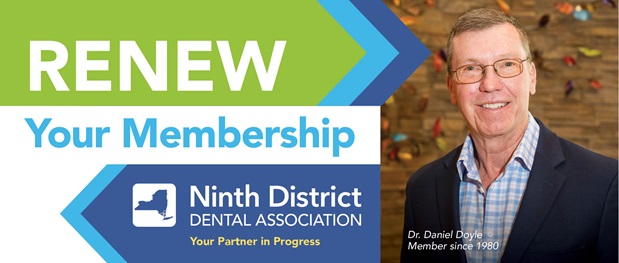EHC Issues Report on Measuring Primary Health Care Spending
Per the notice below, the Effective Health Care (EHC) program has issued a report on measuring spending on primary health care.
Measuring Primary Healthcare Spending
- We identified 67 estimates of primary care spending for parts of the U.S. population. These included 42 State estimates produced by 11 U.S. State Governments.
- Ranges for recent estimates of overall primary care spending are:
- Single estimates that do not specify using narrow or broad definitions of primary care ranged from 5.1 to 10.3 percent of total healthcare spending;
- Estimates that specified using a narrow definition of primary care ranged from 3.1 to 6.1 percent of total healthcare spending;
- Estimates that specified using a broad definition of primary care ranged from 5.6 to 10.2 percent of total healthcare spending.
- Measuring primary care spending starts by defining primary care. Primary care definitions are often labeled narrow and broad. While many estimates use this terminology (narrow and broad), these terms are defined differently across estimates. In general, narrow definitions of primary care include fewer, and broader definitions include more providers, locations, and service types.
- Estimates also vary in what types of payments, what types of payers/insurers, and which patients are included.
- Importantly, when primary care spending is reported as a percentage of total healthcare spending, a similar set of choices about what is and is not included in the denominator, which is total healthcare spending, impacts the estimate.
- Thus, key challenges to accurate and consistent measurement of primary care spending are:
- Developing a consensus definition of primary care that specifies clinicians, locations, and services that can be reliably identified and used to estimate spending.
- Establishing methods to measure, collect data, and attribute spending to primary care through nonclaims payments.
- Appreciating the local and regional needs and politics that led to the differences in definitions and methods. Better understanding and documentation about how these contribute to differences in estimates and how creating a standard approach to estimation could complement, or at least coexist with local efforts, is needed.
- Developing standards for transparent reporting of methods and the many decisions that influence spending estimates, and supporting and implementing incentives or expectations for States and other entities to use this standard, could permit comparisons without limiting State choices.
Background. Policy leaders and researchers have identified a range of primary care spending conceptualizations, developed frameworks and methods for measuring primary care spending, and documented the pros and cons of different approaches. However, these efforts have not been comprehensive, particularly as the number of estimates has grown. We continue this work by identifying the definitions, data sources, and approaches used to estimate primary care spending in the United States. Our objective was to identify where there is and is not consensus across methods, and how initial steps toward a standardized approach to estimating primary care spending might be achieved. We approached this comparison from a societal economic perspective.
Methods. Searches were conducted in Ovid MEDLINE® and Cochrane CENTRAL databases (inception to May 2, 2023), and were supplemented by manual reviews of reference lists, Scopus searches of key articles, gray literature searches of State and organization websites, and responses to a Federal Register Notice, as well as recommendations from Key Informants. Websites of States and organizations that produced reports were reviewed in November 2023 to identify updates. Publicly available estimates and reports of methods were supplemented by discussions with experts who have supported States’ estimates.
Findings. We identified 67 primary care spending estimates for 2010 to 2021: 42 of these were produced by 11 State Governments for their State, 2 were published by the Veterans Health Administration, and 23 were published by researchers or other organizations, which include foundations and policy organizations. Forty-four estimates reported on primary care spending for a single State, one estimate reported spending for the New England States, and 22 reported national spending. To date, 13 State Governments have developed and/or are implementing measurements of primary care spending. When State Governments measure primary care spending, they produce regular, often yearly, estimates. States have produced one to eight estimates, demonstrating some States have more experience with this task than others.
Primary care spending estimates in our sample ranged from 3.1 to 10.3 percent. These estimates started with definitions of primary care, which are often labeled narrow or broad. Estimates may use these same labels to mean different things. Narrow definitions of primary care usually include fewer providers, locations, or service types, while broad definitions include more. State, regional, or national estimates are either reported as two estimates, one using a narrow and one using a broad definition of primary care, or as a single estimate labeled neither narrow nor broad. Variations in what providers, services, and locations are included in definitions of primary care are significant and likely contribute to variation in primary care spending estimates. However, it is difficult to distinguish differences in definitions and measurement from differences in actual primary care spending.
Conclusions. While there are some core similarities in how primary care spending is measured across State, regional, and national estimates, there are more differences. While there may be rationale behind some of these variations, this variation limits comparisons and what could be understood about the impact of policies. Furthermore, lack of clear, detailed reporting of methods can obscure precisely how and why estimates differ. Research is needed that quantifies the impact different decisions and measurement methods have on spending estimates. To assure the validity and reliability of estimates of primary care spending, and facilitate comparisons and links to health outcomes, Federal, State, and policy leaders need to: 1) collaborate to create a primary care clinician database that can function as a public utility for States to allow for more precise identification of primary care clinics and clinicians, and reduce reliance on Current Procedural Terminology/Healthcare Common Procedure Coding System codes; 2) develop a template for transparent reporting of methods used to estimate primary care spending; 3) foster collaboration among Federal agencies and State leaders to develop a consensus definition of primary care and process for estimating primary care spending, with consideration of methods that are easy to understand and transparent; and 4) support the development and ongoing maintenance of State All-Payer Claims Databases, expand to include nonclaims payments, and supply Medicare and Medicaid estimates for every State.
Cohen DJ, Totten AM, Philips RL Jr., Jabbarpour Y, Jetty A, DeVoe J, Pappas M, Byers J, Hart E. Measuring Primary Healthcare Spending. Technical Brief No. 44. (Prepared by the Pacific Northwest Evidence-based Practice Center under Contract No. 75Q80120D00006.) AHRQ Publication No. 24-EHC013. Rockville, MD: Agency for Healthcare Research and Quality; May 2024. DOI: https://doi.org/10.23970/AHRQEPCTB44. Posted final reports are located on the Effective Health Care Program search page.










.png?sfvrsn=4447de7f_1)

















